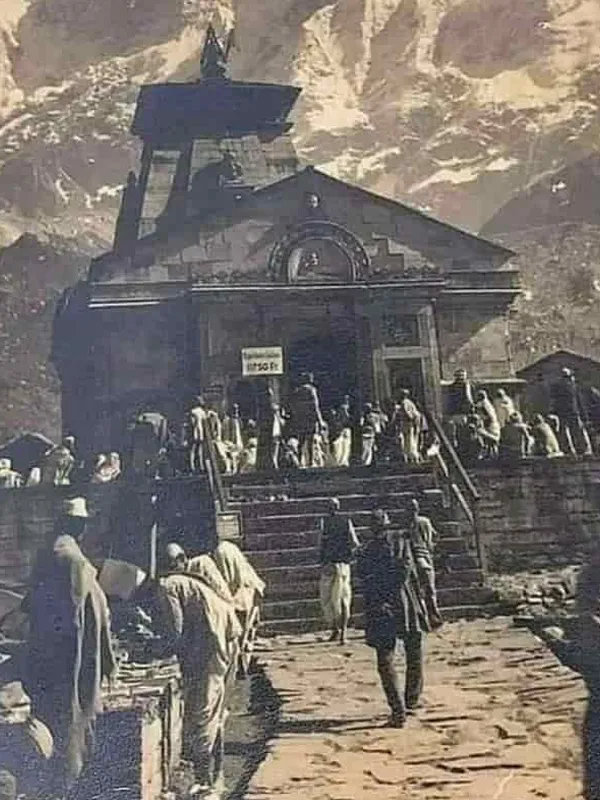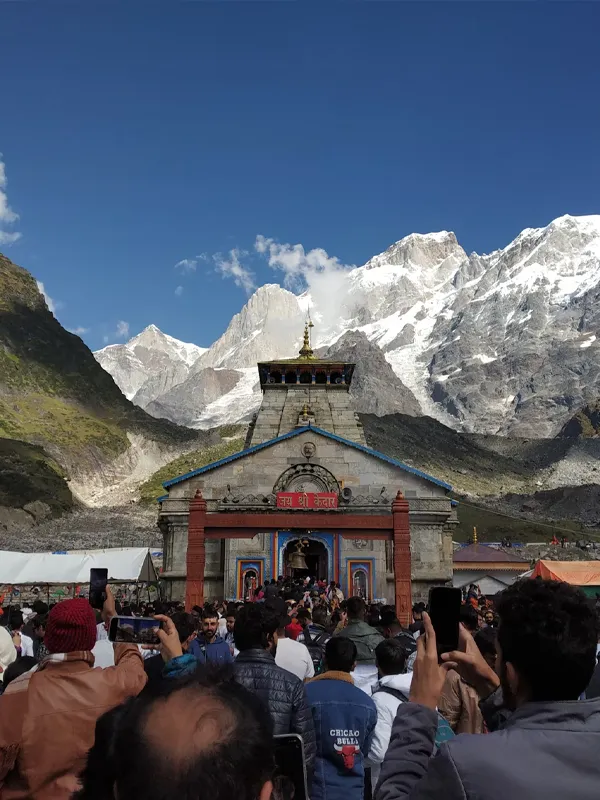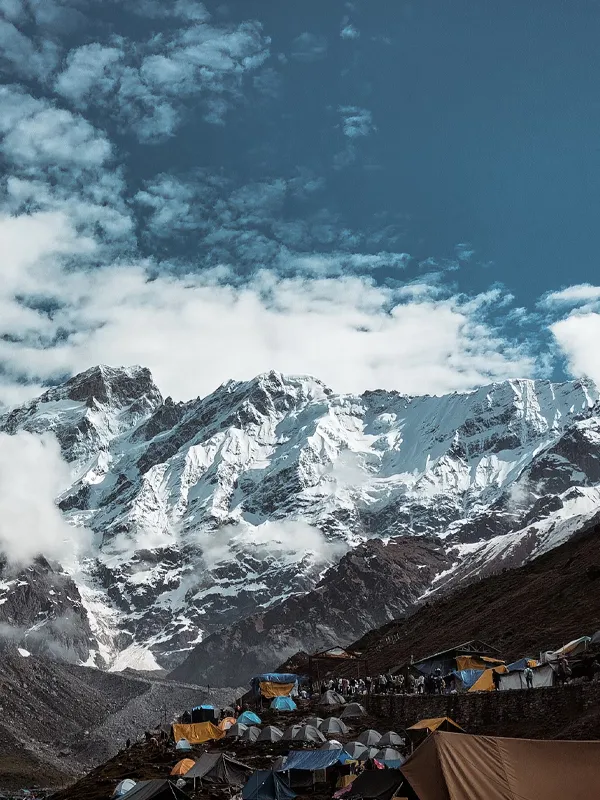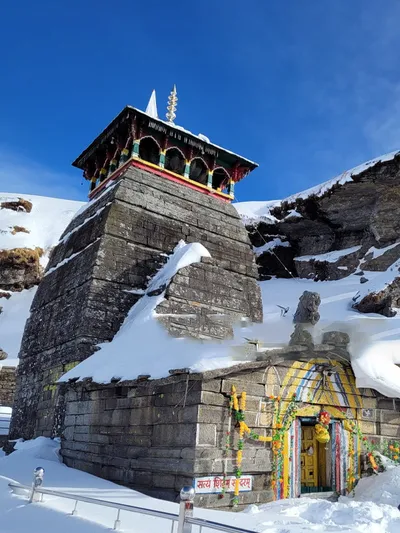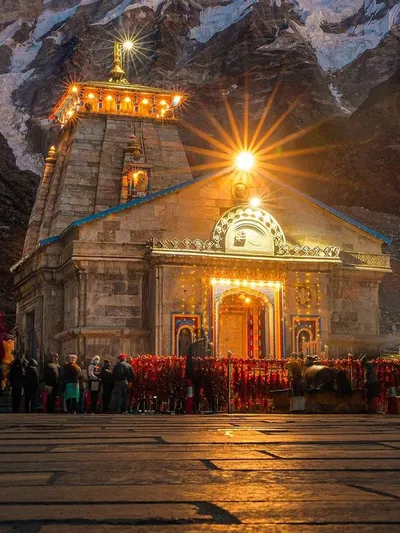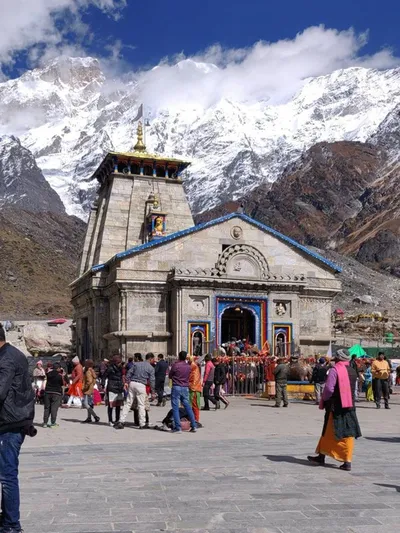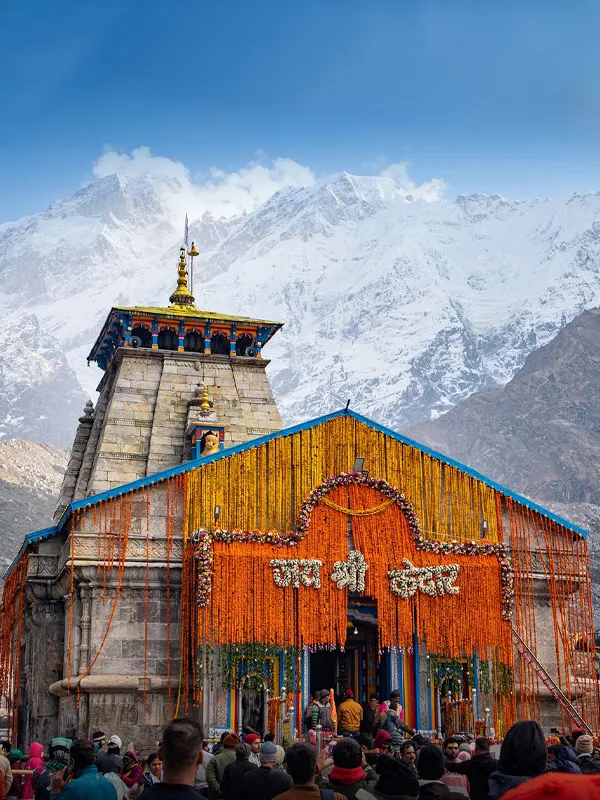
Learn About The Wonderful Knowledge About Kedarnath

Kedarnath Temple of Uttarakhand captivates the hearts and souls of many devotees yearly during Chardham Yatra. The temple is one of the 12 Jyotirlingas of Lord Shiva. The temple of Kedarnath is said to have been established by sage Adi Shankaracharya in the 8th Century. Located at 3584 m above sea level, this 1000-year-old temple is surrounded by many mind-boggling facts. In this blog, we will unveil some of the lesser-known facts about Kedarnath Temple which will amaze your curious mind to reach here and get the divine blessings of Lord Shiva.
Kedarnath Shiva Statue Is Without a Head
Do you know? The idol of Lord Shiva inside the Kedarnath temple is believed to be without a head. However, this missing head is considered to be present in Doleshwar Mahadev Temple in Bhaktapur (Nepal). There is an interesting story behind it. According to the legends, the temple of Kedarnath was built by the Pandavas of Mahabharata. After the war of Mahabharata, the Pandavas were feeling guilty for killing their relatives. They wanted to atone for their sins by getting the blessings of lord Shiva but Lord Shiva did not want to forgive them so easily. He Hid in Guptkashi. It was Bhim who recognized Lord Shiva’s disguise as a bull. He held the hump of that bull tightly but the bull digged the ground and descended underground. Lord Shiva appeared in the form of Swayambhu Jyotirlinga from the ground to forgive Pandavas. Lord Shiva in the form of a bull scattered parts of his body at five different places which today is known as Panch Kedar (Kedarnath, Rudranath, Tungnath, Madmaheshwar, and Kalpeshwar).
Mini Ice Age in Rudraprayag
The district of Rudraprayag was completely covered in ice as a result of a mini Himalayan ice age that had engulfed this region. Kedarnath temple was still there and it was also covered completely under a very thick layer of ice and snowfall. For 400 years the temple remained buried inside this ice age and it survived that. As per the research and studies conducted by scientists, the temple had withstood these hostile and inhospitable weather conditions for centuries and it had become clear that whoever was responsible for building this temple structure wanted it to survive for thousands of years to come.
Unique Construction of Kedarnath Temple
Kedarnath Dham is a true testament of the top notch engineering skills that the creators and construction workers had possessed. The creation of this temple was done with immense care and with an aim of symbolizing every aspect of religion through architecture. The exterior of the temple is made out of pure white marble that signifies peace and harmony among all. A temple structure which is perched on an elevation of 3,583 metres above sea level and constructed ages ago, has impressive dimensions and is built using large stone slabs with 12 feet thick walls.
Unknown Date of Construction
Kedarnath Dham is a true testament to the top-notch engineering skills that the creators and construction workers possessed at that time. The creation of this temple was done with immense care and to symbolize every aspect of religion through architecture. The exterior of the temple is made out of pure white marble which signifies peace and harmony among all. The temple is perched on an elevation of 3,583 meters above sea level and was constructed ages ago. It has impressive dimensions and is built using large stone slabs with 12-foot-thick walls.
Lord Bhairav Nath Temple
Just 500 meters away from Kedarnath Temple, devotees must visit Bhairavnath Temple. Being a Kshetrapal, (Guardian of the region) Bhairav Baba protects the temple of Kedarnath from any natural calamities and harm. He also protects the town during winter months when weather conditions of Kedarnath are at their worst.
Sacred Udak Kund
Do you know that the water of Udak Kund is poured on the statue of Lord Shiva? It is believed that a sip of water from this Kund prevents the Yoga of untimely death. The water of Udak Kund is sacred. It is a mixture of five oceans according to the Shiv Purana. If devotees drink the holy water of Udak Kund they will be free from the karmic cycle of birth and death. The Kund according to the religious beliefs can heal devotees from bad karma.
Jai Kedar and Jai Shree Kedar
In Kedarnath, you will not see anyone saying hi or hello as a greeting. The way of greeting at Kedarnath is different from other places. People here greet by saying Jai Kedar or Jai Shree Kedar. The entire region of Kedarnath is blessed with the healing presence of Lord Shiva and hence Lord Kedar resides in the heart, mind, and even voice of devotees in the form of Greetings.
Wind Bath or Hawa Snan
It is very important to take a bath before entering any religious place but due to extreme weather conditions at Kedarnath, many people cannot take a bath. So they follow the local idea famous in the Garhwal region known as Wind Bath or Hawa Snana.
According to this idea, the air of Kedarnath is so sacred that it is enough to purify the mind, body, and soul. The sacred environment of Kedarnath is enough not to take a bath in Kedarnath. Hence the air purifies the body of the devotees. After doing Hawa Snana, devotees go to the temple to get the divine of Baba Kedar (Lord Shiva).
Unknown Date of Construction
After much research and studies the exact construction date for the temple of Kedarnath is still unknown yet it is clear that it was built centuries and ages ago. The closest that we have come to know about the construction date of Kedarnath Dham is when the Pandava brothers came here in search of Lord Shiva and they established the Panch Kedar Yatra temples they had also constructed the pristine temple of Kedarnath. After this, the temple was re-constructed during the 8th century by Adi Shankaracharya as a part of the Char Dham Yatra of Uttarakhand. However, when the first stone of the temple was laid and by whom is still a mystery.
How Was Kedarnath Named?
There are numerous theories about how Kedarnath Dham’s name and how the Kedarnath region was brought to life. One of the most popular theories about how Kedarnath got its name is that it was named after King Kedar who was the ruler of this region during the era of Satya Yuga. Later on, the presiding deity who is represented in the form of an irregular triangular ling came to be worshipped as lord Kedar or another incarnation of Lord Shiva.
These were just a few selective and interesting facts that define this Dham. We hope that you like all these facts. If we have missed any please feel free to comment and share.
Kedarnath Travel Guide
Kedarnath Travel Packages
Hotels in Kedarnath
Chardhamtour.in is not the official website of the Uttarakhand Government. We are a registered travel agency with Uttarakhand Tourism and provide travel-related services. For Chardham Yatra registration, visit registrationandtouristcare.uk.gov.in for pooja booking, visit badrinath-kedarnath.gov.in for Kedarnath helicopter tickets, visit heliyatra.irctc.co.in for Uttarakhand tourism info, visit uttarakhandtourism.gov.in for Karnataka government subsidy, visit sevasindhuservices.karnataka.gov.in.
Chardhamtour.in aims to provide helpful information, latest updates about Chardham Yatra, and services related to tourism in Uttarakhand.
